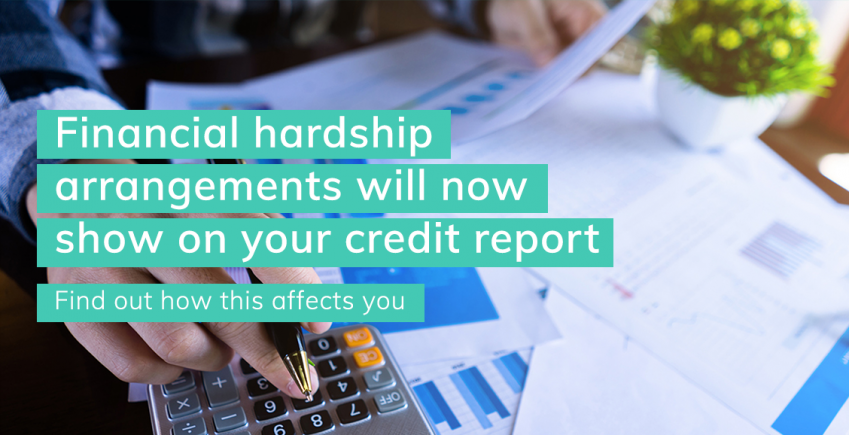Financial hardship arrangements and your credit report — 5 things you should know
Your credit report provides lenders a detailed view of your credit history. It includes the type of credit you applied for, the name of the lenders you’ve applied to and other information such as your repayment history.
Credit reporting has recently changed
From 1st July 2022, your credit report will now show any financial hardship arrangement you enter into with a lender.
The information shown will include the repayments you make under the arrangement, but not the reason for the arrangement or any other details.
Previously, financial hardship arrangements weren’t shown on your credit report.
How this change affects you
This recent change in the Credit Reporting Code ensures any financial hardship arrangements you enter into are shown on your credit report, under your repayment history.
Before the change, if you had a financial hardship arrangement with a lender, missed payments may have been reported on your credit report, without any mention of the arrangement.
5 things to remember
- Only financial hardship arrangements you have entered into after 1st July 2022 will be reported.
- If you enter into any financial hardship arrangement after 1st July 2022, the law ensures that this information is not used to calculate your credit score.
- The law limits what a creditor can do with this information. They can’t make use of this information only to close down a line of credit.
- The law limits what a creditor can do with this information. They can’t make use of this information only to close down a line of credit.
- The financial hardship information has to be deleted after 12 months from your credit report, which is a shorter than a 24-month period for regular repayment history. This will ensure that your circumstances don’t have a long-lasting impact on your credit report.
Want to access your credit report for FREE? Click here.
